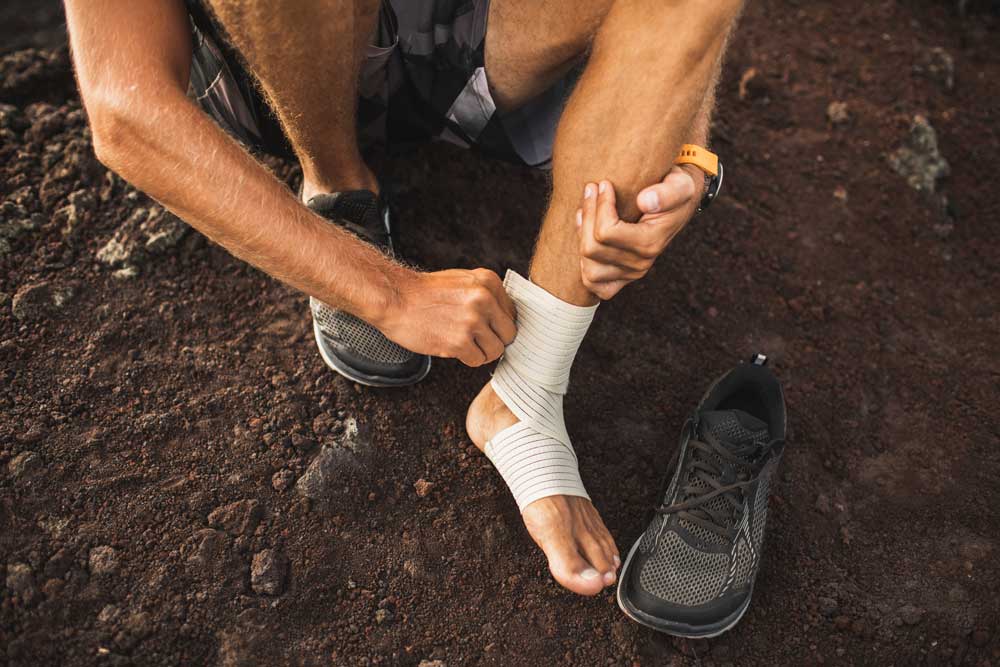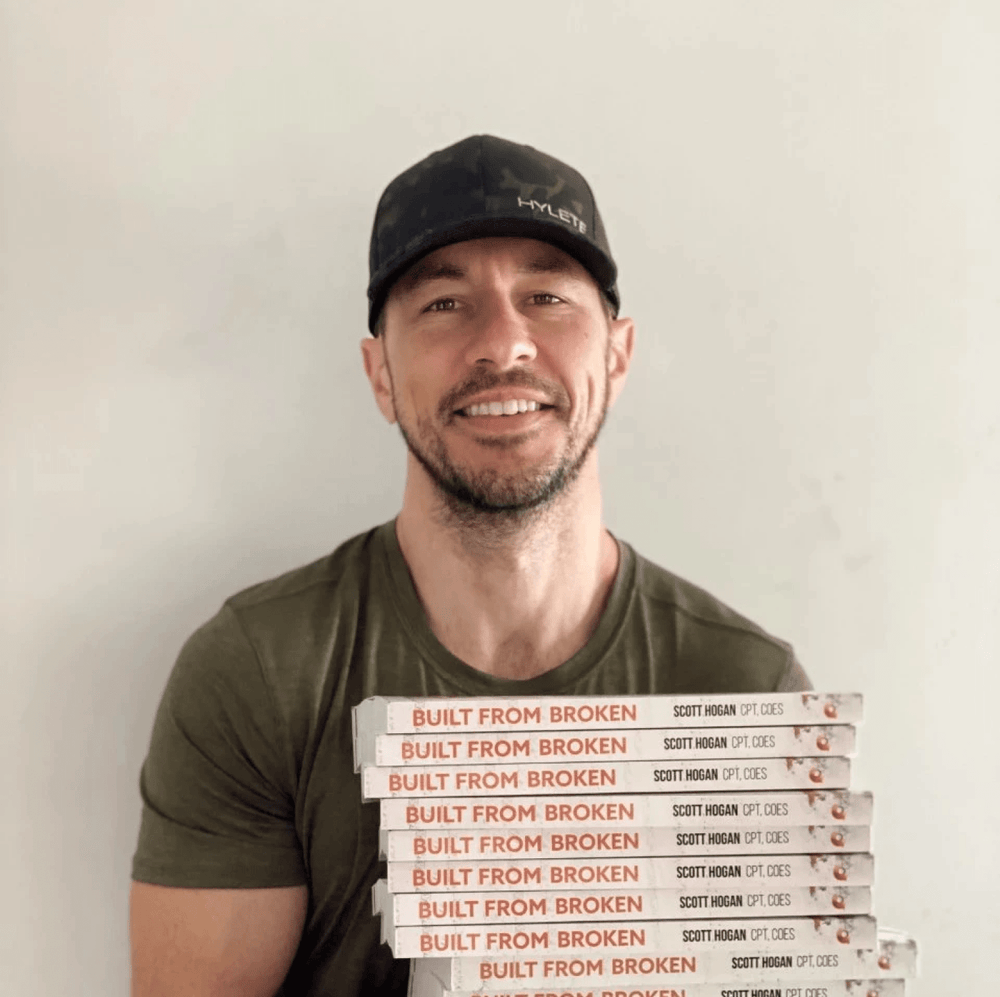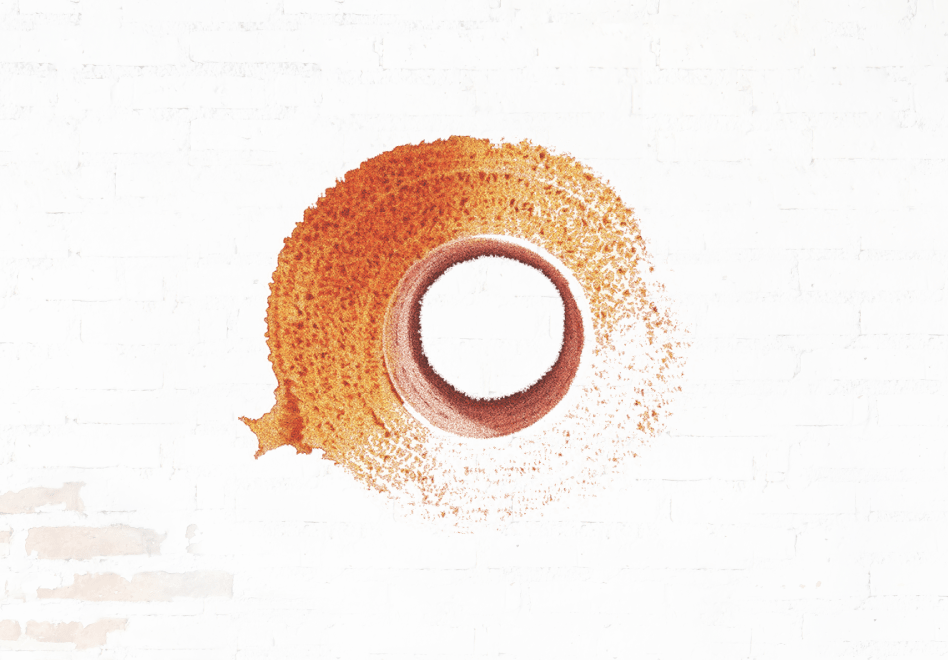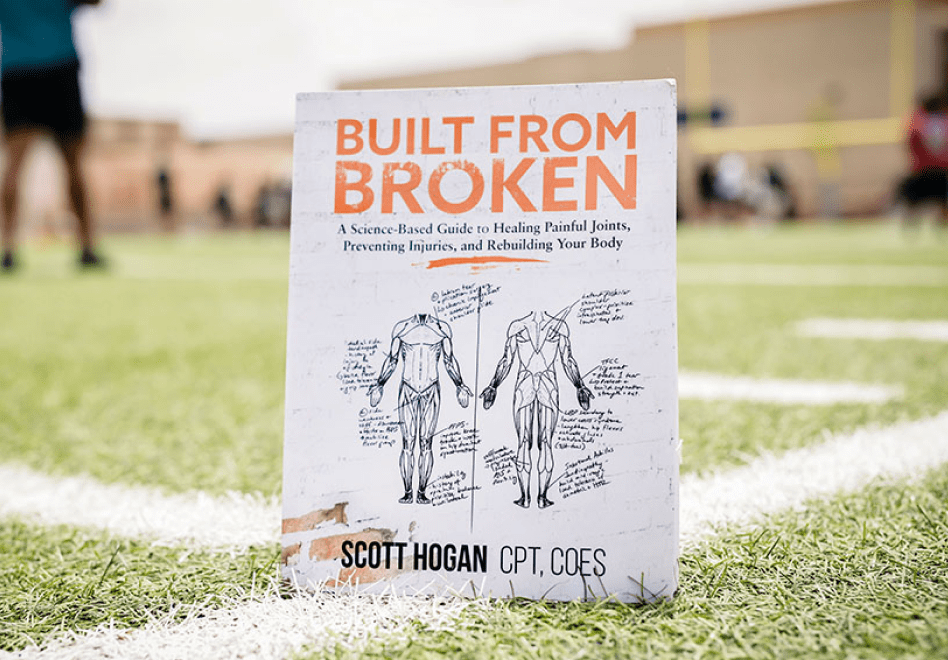
Be built (to last).
The right supplements can help you recover naturally and build a resilient body.

Supplement Quiz
Take this short quiz to discover the perfect supplements for your needs and goals.
About SaltWrap

Built from Broken
Get the best-selling book from SaltWrap founder, Scott Hogan, and start rebuilding today.
Understanding and Managing Low Back Pain

By Chris Dempers, ASCM-EP®, MES
Low back pain is a common frustration that affects people of all ages and walks of life. It refers to discomfort experienced in the area stretching from the mid back down to the upper gluteal region.
This pain may present itself in various forms: a dull ache, sharp situational pain, numbness or tingling, or even pain on one side. The experience of low back pain is highly individual. There’s a seemingly endless variety of symptoms and causes.
The good news is that there are four simple ways to help resolve low back pain that almost anyone can benefit from. But before we get to that, let’s talk a bit about what actually causes low back pain in the first place.

What Causes Low Back Pain?
The causes of low back pain are as varied as the symptoms. It can result from trauma, genetic predispositions, overuse of muscles, instability in the back, or simply age-related degeneration.
However, many cases stem from preventable issues, especially overuse and instability. For example, repetitive movements, poor posture, or lifting heavy objects can place undue strain on the lower back, leading to discomfort.
The most common causes are a lack of flexibility and/or strength. In many cases, it might stem from things like overextending yourself or going heavier than you should have on a lift at the gym.
But there are stealthier culprits at play as well.
For instance, many nine-to-five jobs require you to be seated in front of a computer all day. Over time, this can slowly shorten your psoas muscles (hip flexors). This can cause your pelvis to be shifted up and back with an overstretching of your quadratus lumborum, or QLs. These are the workhorses of the lower back.
With time, the shortening of the hip flexors and the straining of the QLs will inevitably start causing back discomfort, and likely other issues, too. One example of a possible domino effect is sciatic nerve discomfort caused by the nerve's position through the glute — a literal pain in the butt.
My point is that in a scenario like the one I just mentioned, you might look everywhere except your computer desk for an underlying cause of your pain. And that’s part of what makes meaningful healing and improvement of low back pain so difficult — and frustrating — for many people.
Over the years of working with post-rehab and medical fitness clients, I’ve encountered this scenario often. In most cases, this issue is highly treatable, and most people are back to normal in no time.
4 Ways to Address Low Back Pain
Fortunately, there are effective strategies for managing the pain and promoting recovery, particularly when overuse and instability are the primary factors.
Here are four that I often recommend to the clients I work with:
Rest
In the early stages of low back pain, rest is often the best remedy. Taking a few days off from activities that may aggravate your back gives your body the chance to heal.
For instance, if you strained your back helping a friend move heavy furniture, rest may allow the irritation to subside. Similarly, if you can trace your pain to a gym-related mishap, taking a few extra days to rest and recover might be sufficient.
Now, rest can mean several different things depending on the severity of your discomfort.
There are situations where it feels like even blinking your eyes makes the pain worse. Other times, it’s only certain movements. So, we need to use some situational common sense when it comes to our pain. I like the adage, “ if it hurts when you do that, then don’t do that.” Try to stay away from the discomfort as best as you can.
Everyone’s situation will be a bit different, and everyone experiences pain differently. But here are some common questions I get when I tell people they need to rest:
Can I go for a walk? Yes, if it does not exacerbate your condition. And we are talking about a walk in the park or around the block, not up a mountain.
Can I stretch? Sure, if it doesn’t cause discomfort. Typically, I will encourage incorporating some light stretching with rest to help keep muscles from stiffening up further.
Can I go to the Gym? Generally, I wouldn’t recommend this. But it all depends on your level of pain — and which movements trigger it. The main problem is that the spine is engaged in pretty much every exercise, so you will have to get creative with your workouts to avoid aggravating your injury. I would suggest taking a few days off until things settle down. Focus on recovery. And keep in mind that not every injury can be pushed through until it gets better.
Heat Therapy
If rest alone does not resolve the issue after a few days, applying heat can help ease muscle tension and promote blood flow, supporting the healing process. In my experience, this is a good “first step” treatment that doesn’t risk aggravating what could be a more significant injury than just a strain or sprain.
When it comes to heat therapy, it’s easy to get in the weeds with how many products there are out there. The two most cost-effective and practical solutions are heating pads and hot water (like a bath, shower, or hot tub). Both solutions allow you to easily adjust the heat to tolerable levels for you.
I like heating pads because they can be easily positioned in the comfort of your workspace, virtually anywhere in your home, and even while traveling. They are a lightweight and compact form of therapy.
With hot baths, you’re limited in terms of the times when you can use them. But use them when you can. If you only have a shower, you can still get a similar effect as well.
Flexibility Training
Gentle stretching can help increase flexibility in the muscles surrounding the back, reducing tension and improving mobility.
Flexibility is going to be one of the most important aspects of recovery for back pain. Typically, the pain is due to imbalances, which means that some things have tightened up and others are overstretched. We need to balance things out by loosening the tight muscles and relaxing the over-stretched muscles.
Again, you don’t want to risk aggravating your back — especially if your pain is the result of trauma. Instead, progress to this step after you’ve given your back a chance to rest and have done at least a few sessions of heat therapy.
Strength Training
Building core and back strength enhances stability and helps prevent future episodes of pain. Incorporate exercises that target both the back and abdominal muscles for optimal support.
As you can likely guess, this should be the last step you attempt — and only after you’ve achieved some sort of meaningful improvement in symptoms, such as less pain and improved mobility.
Prevention and Outlook
While some causes of low back pain are unavoidable, such as aging or genetic factors, many forms can be prevented through attention to posture, regular stretching, and strength-building routines.
So, if you are a nine-to-fiver trapped at a desk most of the day, make a conscious effort to get up and walk about for a few minutes and do some light stretching every hour, and maybe, if you’re lucky, you can convince your boss to get you a standing desk.
These are a great, practical solution to the “desk jockey” dilemma.
Putting It All Together
If pain persists or is accompanied by other symptoms, such as numbness, tingling, or weakness, it is important to seek professional medical advice. Always listen to your body and don’t try to push through what could be an injury that needs proper care.
Low back pain can be disruptive, but with rest, appropriate self-care, and the right preventive strategies, most people can find relief and regain their quality of life.
The order of operations won’t be the same for everyone because there are so many different types, degrees, and causes of back pain.
Still, here is a quick “cheat sheet” for dealing with different types of back pain:
Tightness: Stretch, heat if necessary, assess what caused the tightness, and if it’s avoidable or not. If it’s avoidable, then stretching should help. If the tightness is unavoidable, then stretching and strength training will be ideal to counteract these early phases.
Aches: Heat, rest, and stretching. If aches are temporary (i.e., avoidable), these techniques should help relieve the aches. If they are constant, then once the pain has calmed down a bit with rest, you’ll need to start adding regular stretching and strengthening into your routine.
Continuous or radiating pain: Heat and rest. If radiating pain eventually subsides, begin with very light stretching. If pain is intermittent, alternate between ice and heat — and rest.
If these treatments do not help alleviate the symptoms in a few days, you will need to seek further medical advice, as radiating pain is typically a sign of nerve impingement.
Treatment with natural-based anti-inflammatories and physical therapy can be very beneficial when started early.
In other words, don’t let your symptoms go on for too long without any sort of treatment. While uncommon, permanent damage could be a possibility.

Chris Dempers, ASCM-EP®, MES
Chris Dempers, ASCM-EP®, MES, runs the health and fitness department for a South Florida hospital chain that specializes in medical fitness. His specialties include orthopedic injuries, fall prevention and balance with aging populations, and fitness protocols for Parkinson’s patients.
Chris is a founding member of SaltWrap's Clinical Advisory Board.
Founder: Scott Hogan

I created SaltWrap to bring together the most practical ideas in therapeutic sports nutrition, corrective exercise, and functional fitness — with the goal of keeping you (and myself) strong, mobile, and built to last.
I've worked as an A.C.E. Certified Personal Trainer, Orthopedic Exercise Specialist, and nutritional supplement formulator.
But more importantly — I've spent most of my life battling injuries, joint pain, and just being plain beat up. So I know what it's like to struggle toward fitness goals.
SaltWrap is here to push you through injuries, setbacks and perceived physical limitations. To a place beyond what you think you're capable of. Sign up here to stay in the loop.
Learn more about my best-selling injury prevention and recovery book, Built from Broken.






